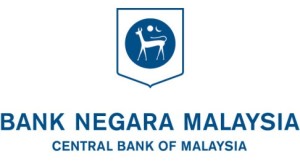
Central Credit Reference Information System (CCRIS)
If you are a borrower, and if you have default in any loan repayments, CCRIS will have the records and you can be blacklisted if you do not handle your repayment properly.
Bank Negara sets up Central Credit Reference Information System (CCRIS) to supervise financial institutions in order to ensure that the financial system of the country would be sound and stable.
As such, the Bank promotes prudent credit policies and professionalism among the financial institutions, including the adoption of best business practices in credit risk management. One way of doing this is by providing CCRIS to the financial institutions so that they can make faster and better informed lending decisions.
The information reported to the Credit Bureau is housed in a computerised database system known as the Central Credit Reference Information System (CCRIS). At present, the database system contains credit information of all borrowers in Malaysia.
CCRIS automatically processes the credit data received from the financial institutions and synthesises the information into credit reports, which can be made available to the financial institutions upon request.
CCRIS is a system that collects credit information on borrowers from financial institutions and supplies the information back to them. This is one of the sources of information used by financial institutions to help them establish a view of the credit histories of potential or current borrowers. However, it is not a blacklist system as perceived by some people.
The Credit Bureau is established by Bank Negara Malaysia under the Central Bank of Malaysia Act 2009 to administer CCRIS. Everything handled by CCRIS is regulated and monitored closely by Bank Negara.
We as borrowers can request for credit information for the purpose of verifying the accuracy of information reported in the credit report. However, if a person unlawfully accesses a credit report, the person can be subject to severe penalties under the Central Bank of Malaysia Act 2009.
When you apply for a loan, CCRIS provides valuable details to the bank such as:
- Existing personal credit facilities of a customer, such as type of facility, and ownership of the credit facilities;
- Total financial commitment, which includes the balance outstanding and the total limit for each of the credit facilities;
- Conduct of each credit facility for the past 12 months, including legal status;
- Other relevant information such as Date of Information Update, Frequency of Payment and Type of Collateral.
Please note that CCRIS is used by the bank as a measurement tool for loan decision making as the existing track records indicates the risks a bank may face in the future if they approve the new application. However it is not the only tool used by banks to evaluate credit worthiness, as there are many other risk-mitigation criteria the banks can adopt, such as:
- Reduced Margin of Financing
- Higher Financing Rates
- Good Potential for Higher Capital Appreciation for the Property
- Strong Debt Servicing Ratio (Repayment Capability)
- Additional Collaterals / Guarantee / Joint Applicant
- Good Conduct of existing Credit Facilities with own bank (e.g. Credit Cards, other loans)
Credit Information Held by the Credit Bureau
The Credit Bureau of Bank Negara Malaysia collects only credit information on individuals, businesses (sole proprietors and partnerships), companies, and Government entities borrowers. The credit information collected by the Credit Bureau is sourced by the participating financial institutions in Malaysia.
These financial institutions include all licensed Commercial banks, Islamic banks, Investment banks and several other financial institutions. In addition, reference information on the particulars of borrowers is sourced from the National Registration Department (Jabatan Pendaftaran Negara) and the Companies Commission of Malaysia (Suruhanjaya Syarikat Malaysia) for purposes of verification against the particulars provided by the financial institutions. The data is updated by the data providers on a regular basis.